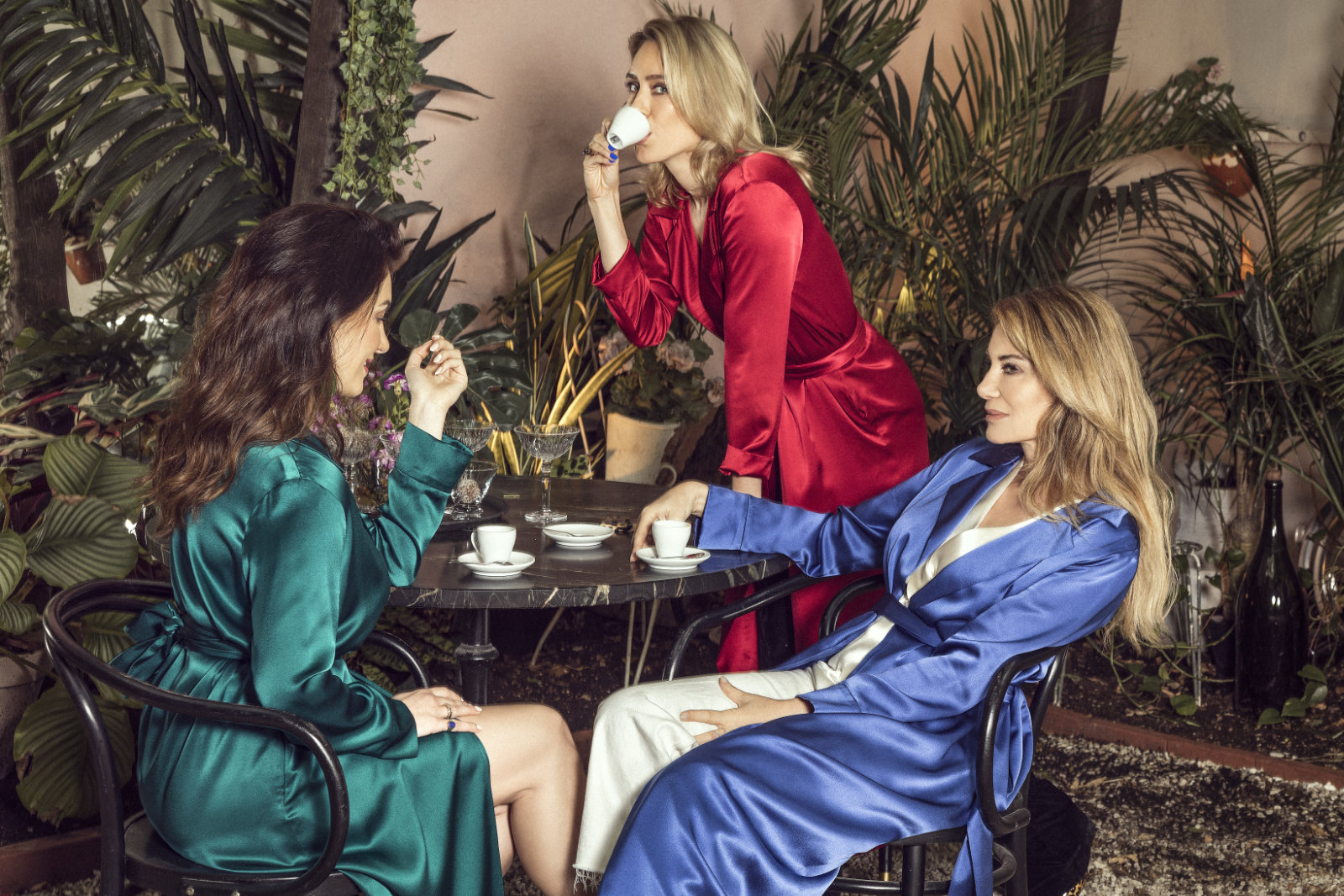
FASHION Seeing that fashion often fell short on innovation and ecological promotion, Laura Sänger created La Katz, a silk label that adopts a cradle-to-cradle philosophy, and eliminates all pollutants and plastics. The result: silk that feels purer than what you might have come to know, raising the standard. Jack Yan interviews her
Photographed by Luise Hannah Reichert and Kaja Wagner
First published in issue 43 of Lucire
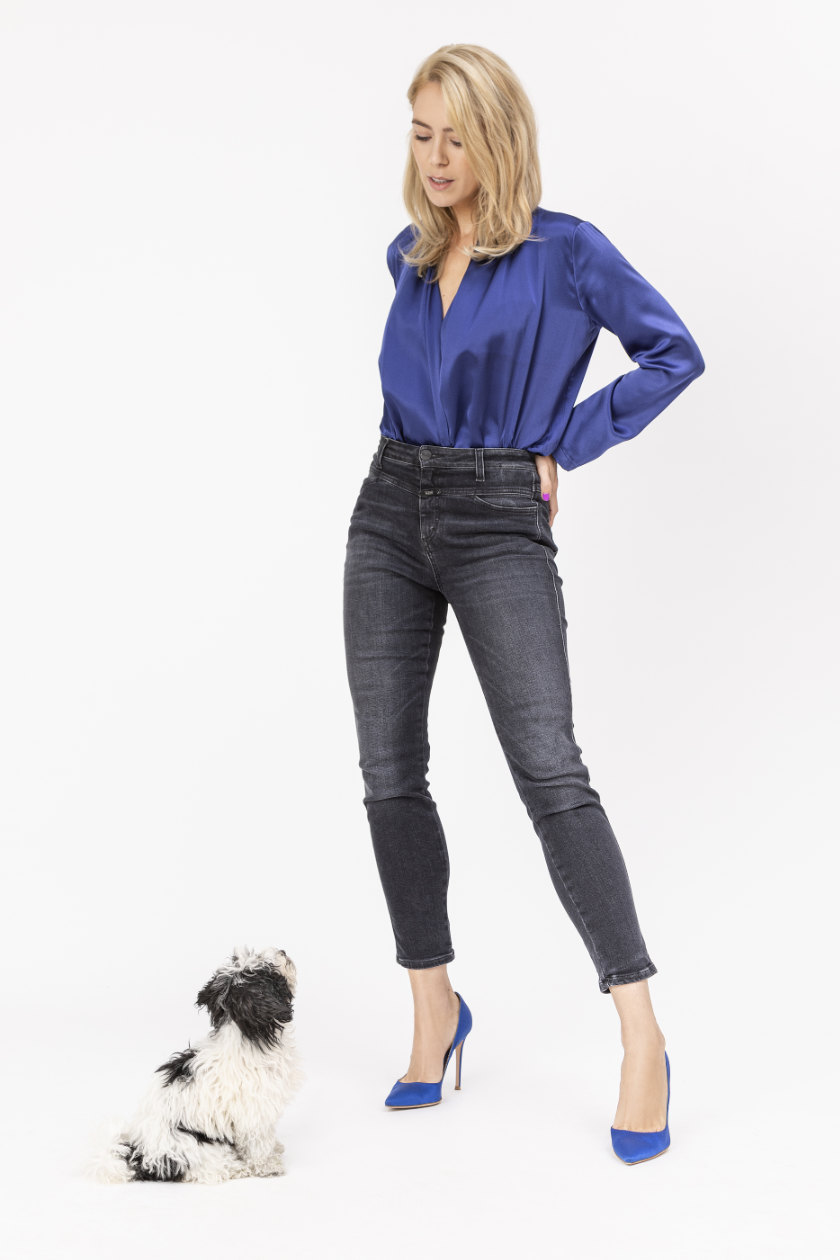
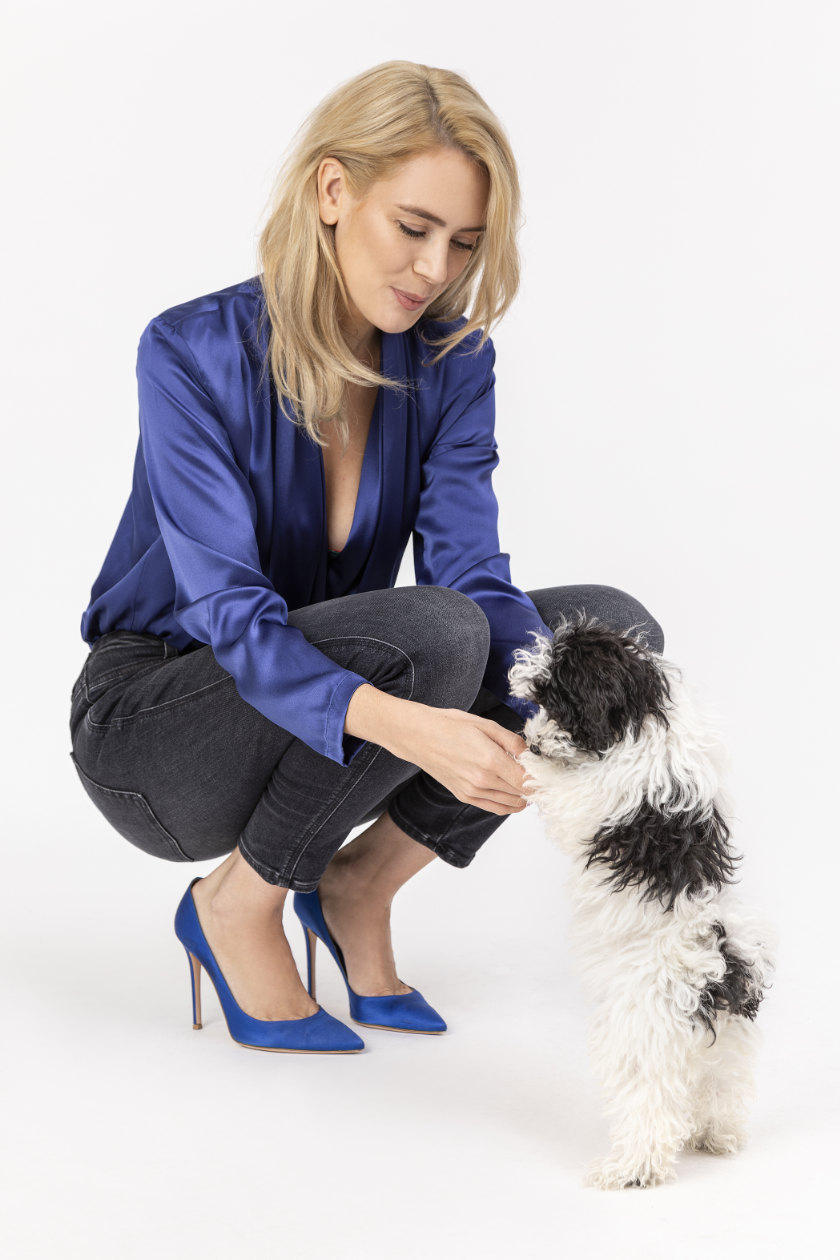
Laura Sänger wears La Katz’s silk blouse in ultramarine; also starring her maltipoo.
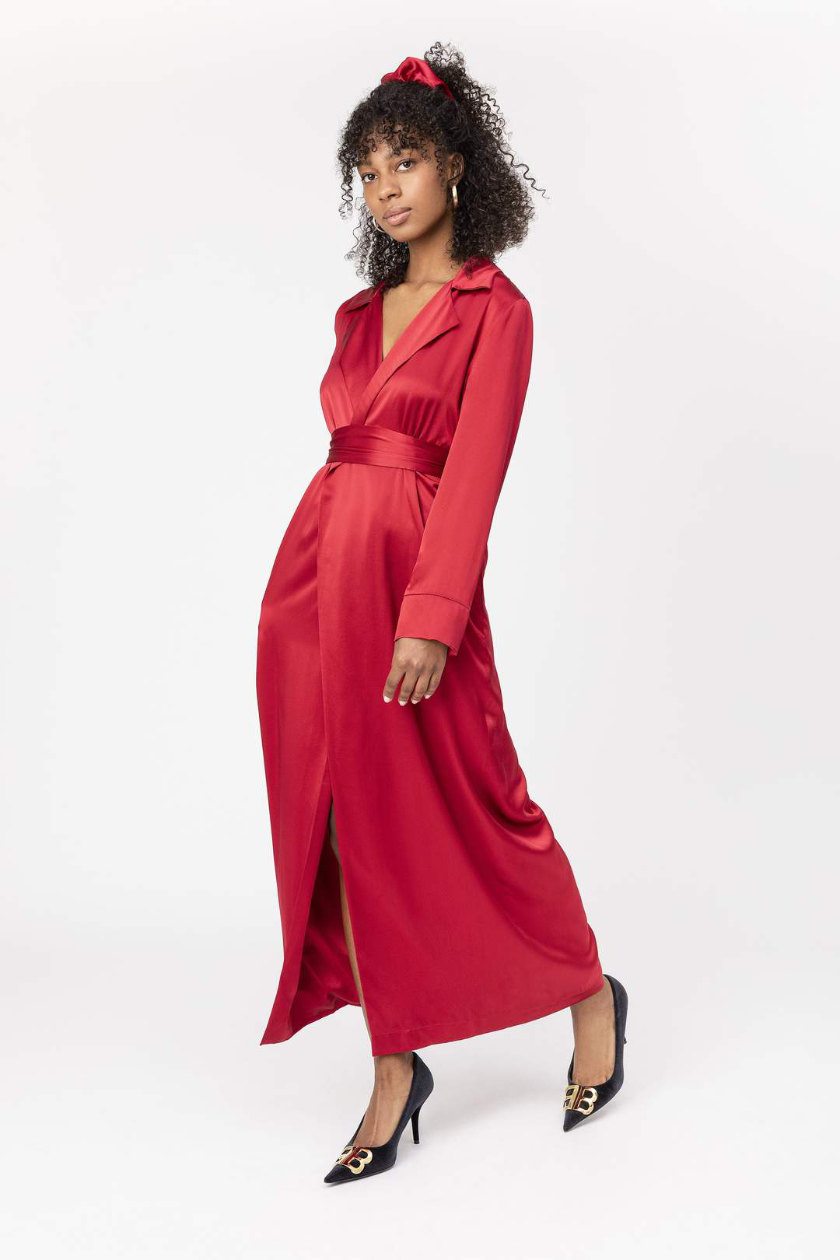
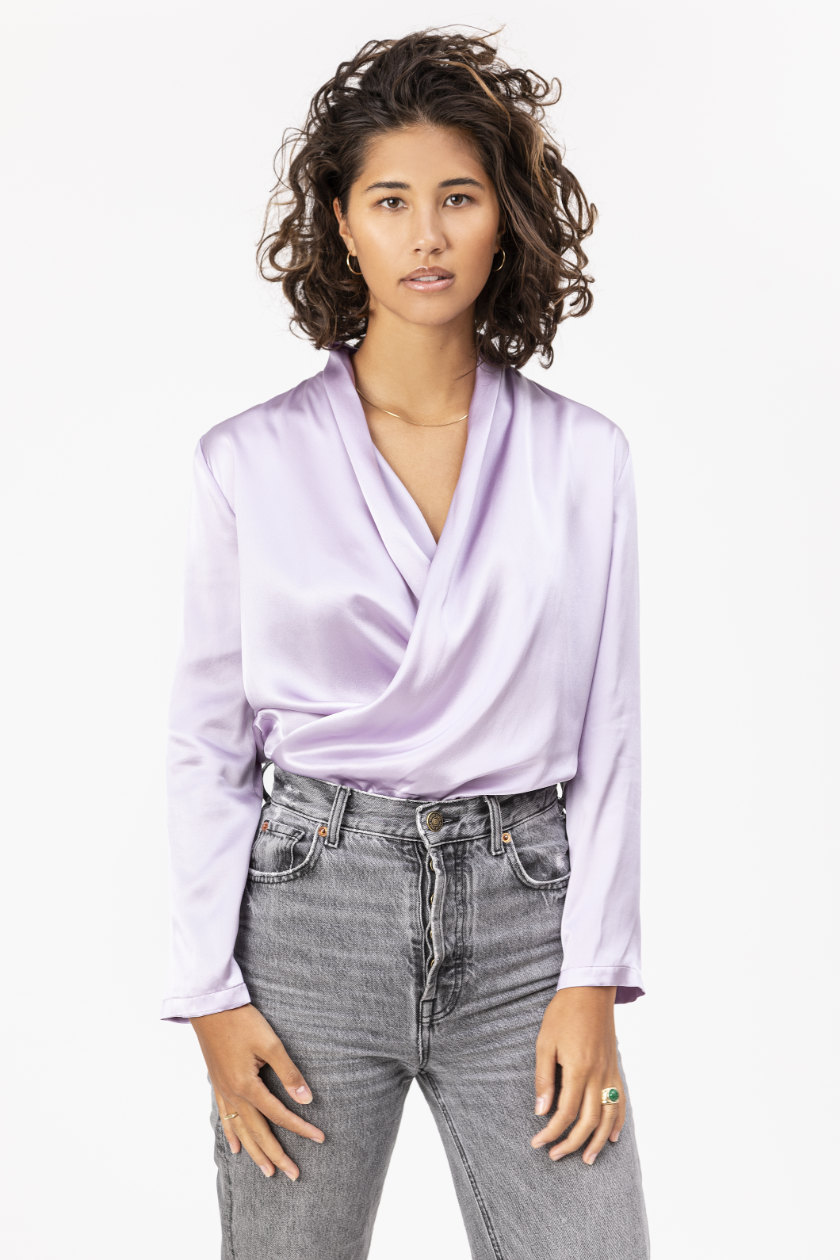
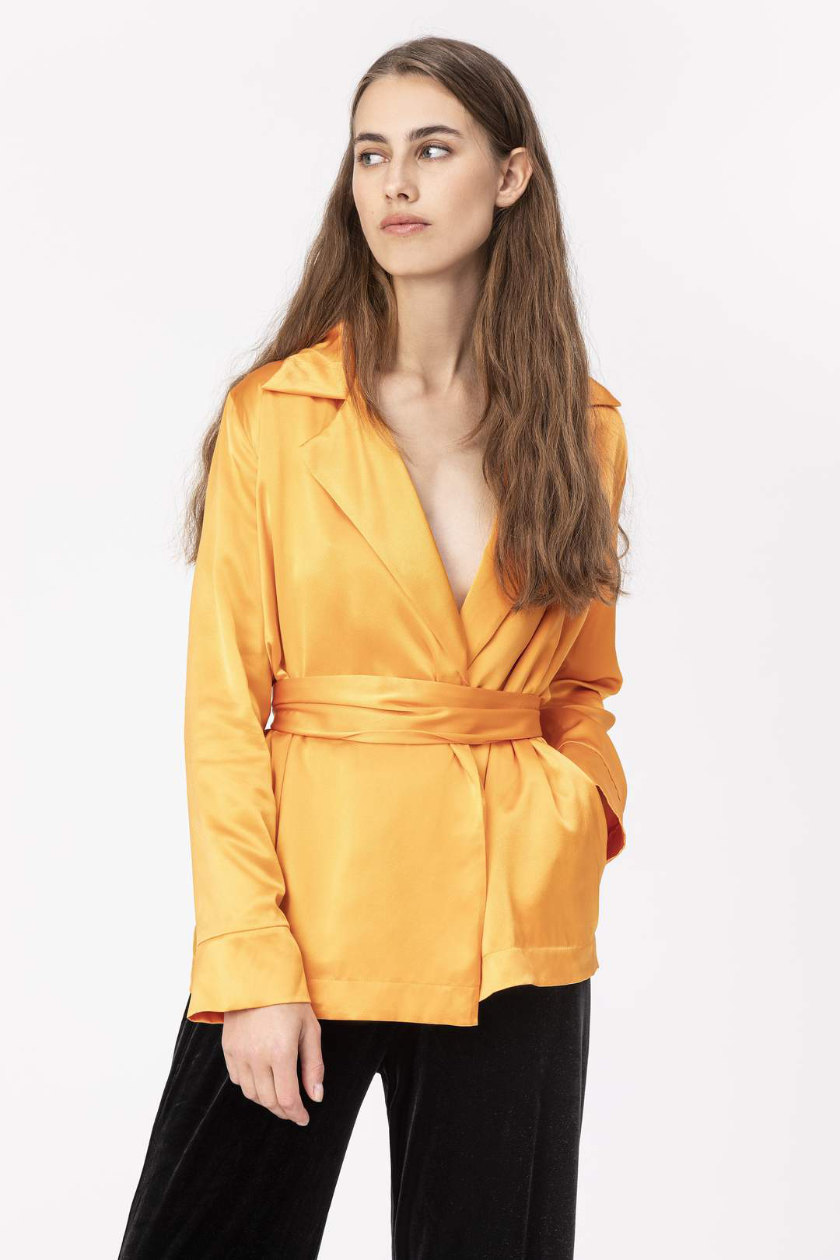
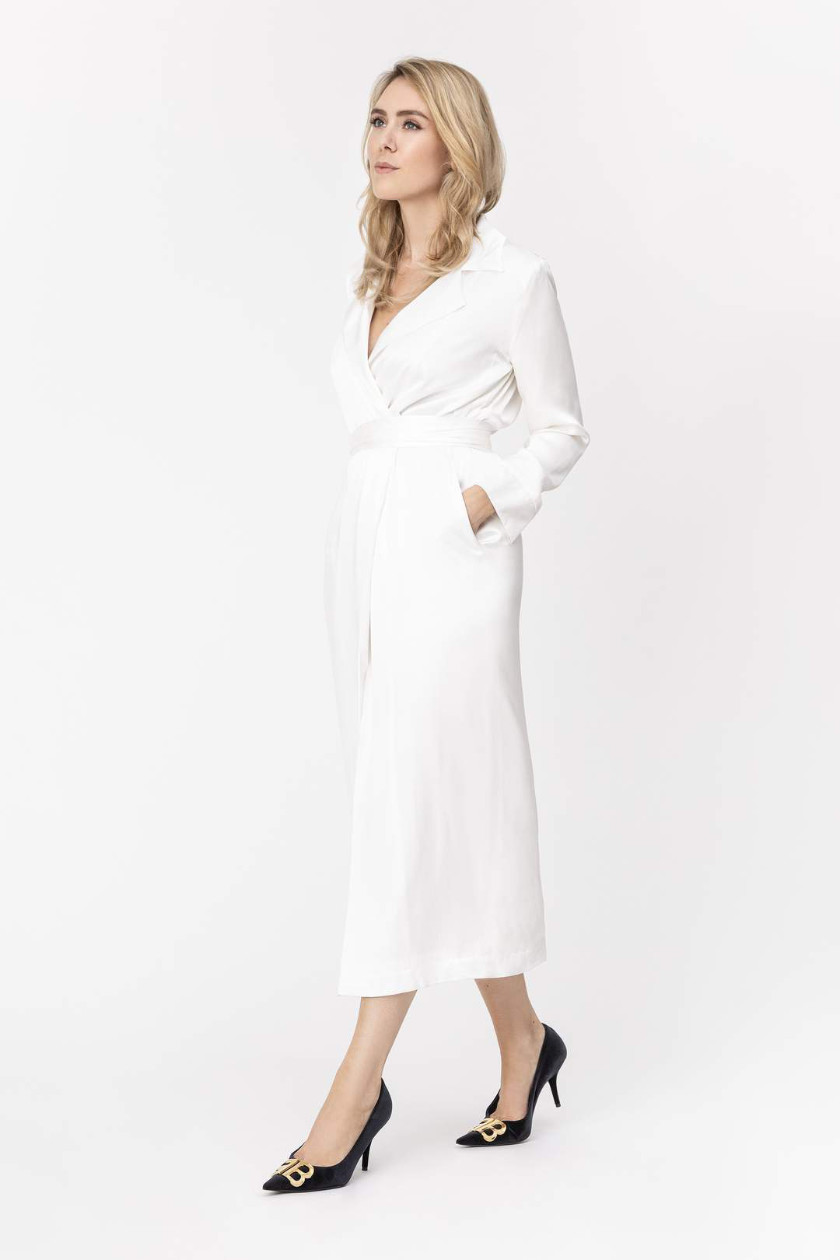
For a new label that started only last year, La Katz’s silk coats, blazers, blouses, dresses and accessories are all particularly well resolved. The company’s cradle-to-cradle design philosophy, a holistic approach which protects and enrich ecosystems while being essentially waste-free, had also been well thought out, going beyond what we often see with labels claiming green credentials. It wasn’t just the silk that was skin-friendly: every part of the production chain from the way the silk is gathered to the packaging had been rethought, eliminating harmful substances and all plastics.
For starters, La Katz’s organic peace silk is certified and the silkworms, living on a farm in India, get to metamorphose into butterflies. No pesticides or genetic sprays are used, making the silk softer than conventional ones. The silkworms are protected with mosquito nets, and the cocoons are processed without harmful chemicals—all that’s added is natural soap, rather than toxic metal salts as others might use. The silk is then finished using herbal oils. The result is a silk that is completely biodegradable. Dyeing takes place in Wien, Austria, because that is where La Katz has found the most environmentally conscious supplier, while final manufacture takes place in Germany, again under strict conditions.
One’s skin is breathable as a result, and with the serecin that’s naturally in silk, there’s an anti-ageing effect. It also has essential amino acids and natural proteins, which relax the nervous system.
The brand is the brainchild of Laura Sänger, who also appears in some of La Katz’s marketing alongside her models, not to mention her maltipoo. Speaking with Sänger, it became clear that her background—she had worked in PR for many years—informed just how complete and substantial her label would be. She sees past the empty claims of so many players in the fashion sector.
Sänger has a degree from the Universität Wien in journalism and communications, which helps place her thoughts into context. ‘My degree helps me to deal critically and reflectively with the societal, social and political present,’ she says.
‘I can still remember my first lecture very clearly. The professor said to us: there is no such thing as objectivity. Retrospectively [it was] one of the most important sentences. And the basic building block for perceiving reality, especially when it comes to public content. In retrospect, I think that has sharpened my vision in order to develop a critical eye on the subject of sustainability. What is communicated from the outside does not correspond to the truth. On the contrary: the fashion industry, in particular, tells the most and does the least to produce better and healthier clothes.’
In the 2010s, Sänger cut her teeth in public relations, with one of her first roles at the Bringdienstes Foodora, a start-up at the time, and today still operating as a food delivery service, but not in as many markets as it did at its peak. She honed plenty of skills, running Foodora’s poster campaigns, guerrilla marketing, events and press work, and even engaged in cooperation with bloggers, at a time ‘when it was still considered absolutely new and modern.’ She also learned what she didn’t want to do with her own venture.
She says, ‘That gave me a very large horizon of experience. Because even if it is a completely different industry that I am in today, communication and branding are still the key.’
She adds, ‘The fact that it was a start-up was also very valuable. With a tight budget, the creative potential is also greater. I still have to prove that today, as I don’t have venture capital to support me financially, for example. Foodora, she notes, was about rapid growth, and that isn’t her aim for La Katz, which she sees as a long-term brand.
‘My brand is growing more slowly for this, but it is also my goal that in 20 years it will exist and be an integral part of the luxury industry.’
After Foodora, her PR work took her into other sectors. One thing characterizes a lot of Sänger’s work when you look back at it: it is among the most press-friendly, providing information easily accessible by media. And her next role contributed something important to La Katz.
Sänger explains, ‘My last professional station—before I founded La Katz—was a communications agency in Berlin. After the experience in start-ups, I wanted to move more in a direction that touches and inspires me. So I was then responsible for design and interiors, including for the Swiss furniture manufacturer USM, which stands for timeless classics. An architect at USM made me aware of the cradle to cradle sustainability concept …
‘I was incredibly enthusiastic about the concept. Because for the first time a real solution was presented, and not only partial aspects were improved. The current sustainability discussion is so negative and usually boils down to the fact that we should simply reduce the existing one. But why not be really innovative and rethink products? Cradle-to-cradle does this by rethinking the entire value chain and developing holistically clean products right from the start.’
She found that her work didn’t bring her the sense of design and beauty that she sought in her career, and began looking for something that would combine ‘beauty and meaning.’ However, Sänger stresses that fashion was not her dream. ‘But I saw the greatest need for innovation here. In terms of materials and workmanship, the luxury industry, in particular, often has the same mechanisms as fast-fashion corporations. The aim is to reconnect luxury with what it actually stands for: quality. At the same time, in addition to the vision of creating something good, I can continue to pursue my love for colours and fabrics.’
It becomes clear then just why La Katz has the philosophy that it does when we asked if it fulfilled her desire for beauty and meaning. She elaborates, ‘La Katz is the first silk brand in the world to completely design its clothing according to the cradle-to-cradle principle. Specifically, that means no pollutants, no plastic. Conventional silk is—even if silk is generally perceived as a noble material—full of pollutants and pesticides. We consider every detail—from the yarn to the packaging.
‘Rethinking things and being really different (and thus innovative), that is the whole point of the brand. And of course my personal vision and the engine that drives me. There are already enough beautiful clothes in the world. That alone wouldn’t have been enough for me either. So yes, I found my personal meaning with it. Even if it is of course a process. By setting a new standard in the fashion world.’
Sänger didn’t take things lightly when starting her new venture. ‘Starting a label is exhausting, there are many fears and insecurities. Fashion in particular is extremely complex: it’s not just about a few nice clothes and a pretty Instagram channel. You have to take care of a production and that means from the yarn, label, button to the packaging—find suitable producers and build a production network. Up to your own online shop, sales and logistics. Marketing and PR are essential for this. Corona is an additional challenge. Fashion lives from a creative and interactive exchange. This is not happening at the moment. I’m all the more excited about the future.’
The silk process was one developed by her Indian producer, who shares her principles of rethinking existing processes. ‘This not only leads to a biological silk, but also contributes to biodiversity. Since we don’t use any pesticides, the soils are healthy.’ The farm is 100 ha. in size, as the natural cultivation requires more space, with the silkworms growing outdoors.
Sänger had got to know the Indian producer, which cemented her idea to concentrate exclusively on silk. ‘He is the only one in the world who produces peace silk and is also organic. I would like to see the attitude of producing a really clean product for other materials as well. All other material units come from Austria or Germany. It took me the longest time to find these producers. Because it’s not just about the sustainability aspect, the materials must also meet quality standards and æsthetics.’
The brand’s symbol itself features a cheetah, which she says represents ‘something graceful, noble and strong and that not only stands for the silk, but also for the women who wear my clothes.’ The word Katz appears æsthetically pleasing to her, and la was added as a feminine article.
We noticed one aspect of La Katz’s æsthetics: its use of colour. There are so many who adopt a monochromatic palette these days, but Sänger has been far more adventurous and uplifting with her colours. The range looks premium not just because of the materials, but the rich, regal shades she has chosen: bright cerises, royal blues, and golds among them. She is in accord with what we believe buyers want: ‘I love strong colours! Colours look incredible on silk in particular—it would almost be a waste if I only used muted colours. Colours are part of the identity of La Katz, because our motto is “Colourful Elegance”.
‘On the one hand, La Katz wants to consciously differentiate itself from the current fashion trend and has therefore decided on an uplifting colour palette. I was bored of the same colour scheme that one comes across all the time, especially online. Everything is only bathed in beige, black and white tones. I perceive colours as livelier,’ she says.
With the first six months being purely online, thanks in part to COVID-19 still present in Europe, Sänger now plans to head into retail. There is no substitute, given the quality and care that has gone in to La Katz’s production: ‘It is very important to me that this special silk can be seen and touched.
‘We are planning a podcast in which we will speak to various industry leaders. It will also be about the beautiful and æsthetic in fashion, but we still focus on exciting information on sustainability. Especially when it comes to this topic, the greatest people are still very confused as almost every company now describes itself as sustainable. I’m particularly looking forward to that!’
Indeed, she considers La Katz to be ‘beyond sustainable’, having eliminated toxic substances and plastic. ‘La Katz wants to set a new standard in luxury fashion and associate luxury with real quality again,’ she says. •
Jack Yan is founder and publisher of Lucire.
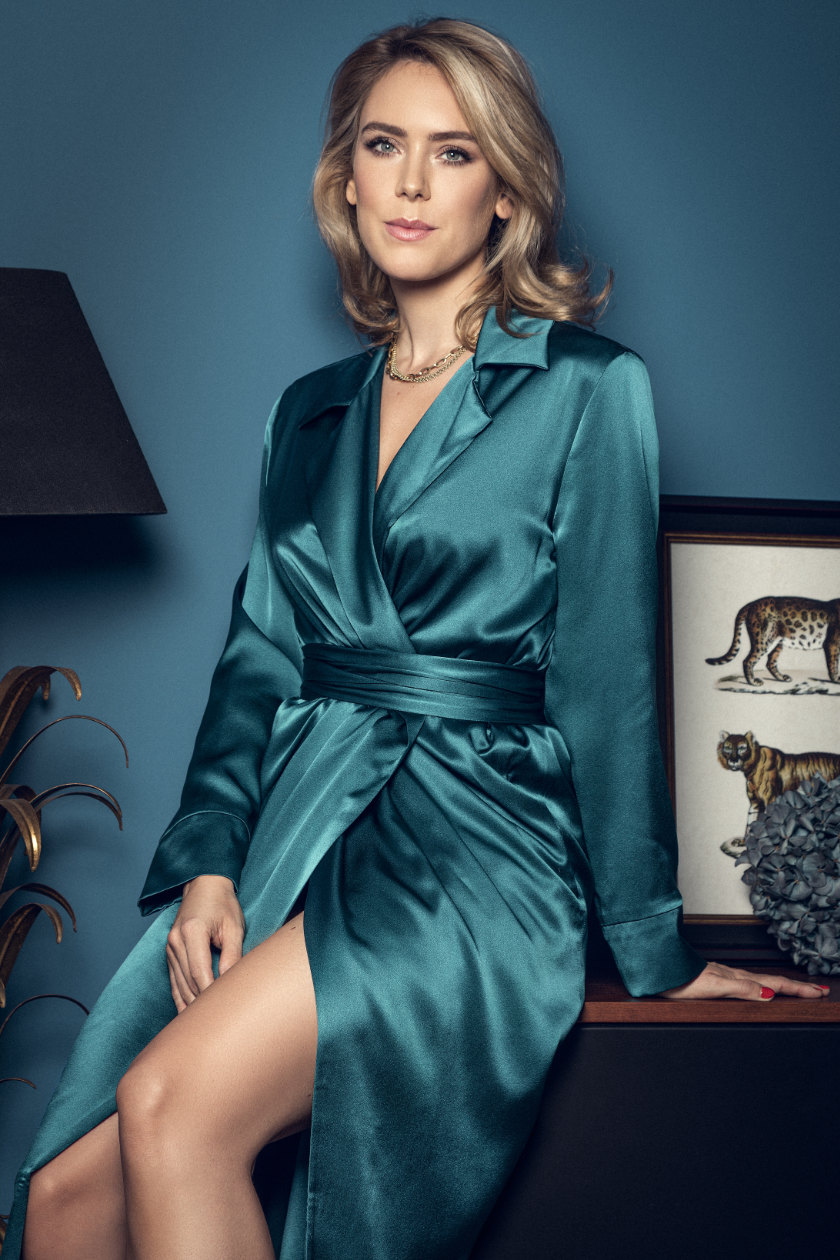
Related articles hand-picked by our editors
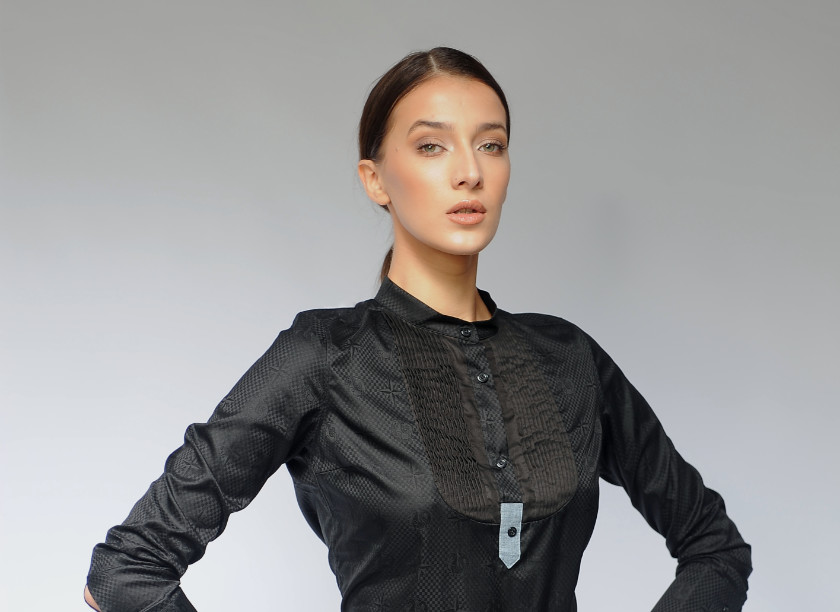
Citizen of the world
Karnit Aharoni lived and worked all over the world before deciding to create her luxury designer label in France. She tells Jack Yan her story and her approach to creating fashion
Photographed by Greg Alexander
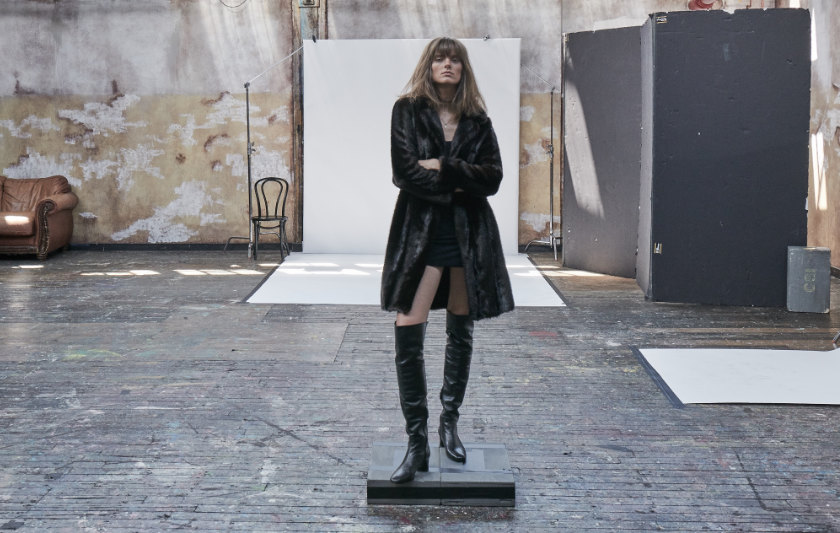
Getting real on faux fur
We look at House of Fluff, one of faux fur’s premier labels that gained such a fast following that it was called upon to re-create Elton John’s coats in Rocketman. Jack Yan interviews House of Fluff founder Kym Canter
From issue 41 of Lucire and the January 2020 issue of Lucire KSA
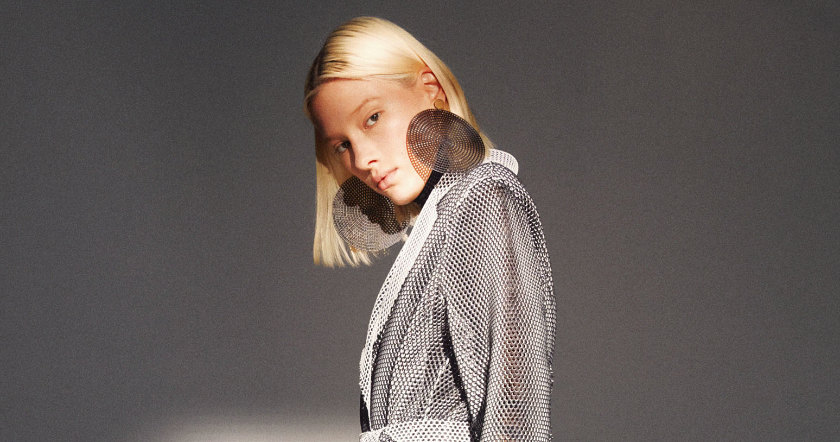
Reinventing formal wear
Based in Jeddah, Saudi designer Noora Alharthi, is best known for her stylish collections of women’s suits and jackets. Qurratulain Wahab met up with Noora to find out more
From the November 2019 issue of Lucire KSA